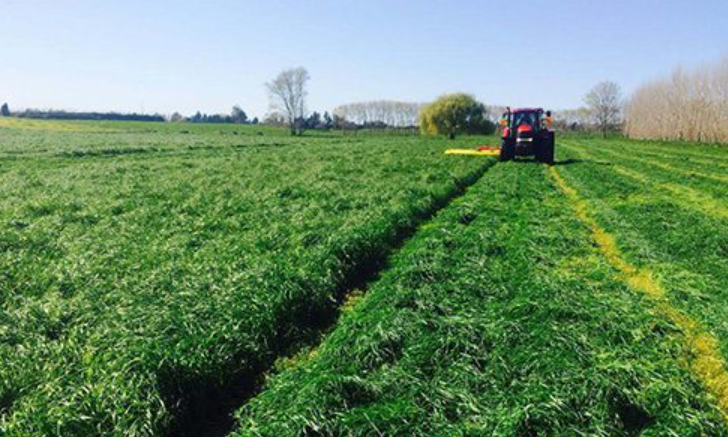The spring of 2025 offers a key strategic opportunity for North Island dairy farmers, with climate forecasts suggesting near-normal temperatures, rainfall, and soil moisture, supported by a potential weak La Niña event. This outlook is generally favourable for robust pasture production. However, a proactive and data-driven approach to feed planning is essential to manage the inherent challenges of lush spring pasture.
The Challenge of Lush Spring Pasture
While abundant and high in energy (11.5–12.5 MJ ME/kg DM) and crude protein (18–35% DM), lush spring pasture presents a fundamental physiological challenge for dairy heifers. It is critically low in Dry Matter (DM), which can be as low as 12–18%. This low DM concentration means a heifer must consume a significantly higher volume of pasture,
potentially limiting total feed intake and preventing her from meeting critical liveweight
targets.
Another major nutritional challenge is the lack of physically effective fibre (eNDF -effective neutral detergent fibre). The high sugar content of spring grass leads to rapid fermentation in the rumen, causing a sharp drop in pH.
A pH below 6.0 inhibits the fibrolytic bacteria responsible for digesting fibre, creating a vicious cycle that reduces overall feed efficiency and can lead to digestive disorders.
To achieve target growth rates (e.g., 0.7 kg/day for Holsteins), the focus must be on promoting lean growth and ensuring optimal rumen function.
The Importance of Fibre and Strategic Supplementation
The core recommendation is to integrate a sophisticated feed plan that uses supplements to solve underlying physiological problems, not just fill simple feed deficits.
The solution to the low fibre challenge is the strategic provision of long-stem fibre, most effectively hay or a high-fibre silage. Physically effective fibre stimulates chewing and rumination, which produces saliva containing bicarbonate and phosphate salts. These act as a natural buffer, stabilizing rumenpH to a healthy range (6.2 to 6.8) and allowing the animal to more effectively utilize the high-quality nutrients from the pasture.
The nutritional analysis reveals that supplementary feeds serve different purposes:
Hay (Good: 9.7 MJ ME/kg DM, 54% NDF) is primarily a fibre source to ensure
rumen health.
Palm Kernel Extract (PKE) (11.0–11.7 MJ ME/kg DM, 17% Crude Protein) is an
excellent source of concentrated energy and protein to fill a feed gap.
A common error is to select supplements purely on a cost-per-energy basis. Adding a high- energy concentrate like PKE without first addressing the fibre deficit could worsen rumen acidosis. Therefore, a small allocation of hay is a fundamental requirement in spring.
Key Action Points
To capitalize on the season and mitigate risks, farmers should focus on:
Implement a Rolling Feed Budget: Continuously monitor pasture growth and DM
percentage to inform daily feed allocations in real-time.
Produce Quality Silage: Harvest pasture at the optimal leafy stage and wilt it to the
correct DM concentration (30–40% for bales; 25–35% for stacks) to produce a
versatile, high-quality feed asset.
Engage with Contractors: Maintain clear and effective communication with silage
contractors to secure services and ensure timely harvest.
Maintain a Contingency Plan: Prepare for weather variability or a delayed spring
flush by having a plan to quickly access alternative supplements like PKE.
Bryan Aldridge
South Waikato and Bay of Plenty Service Manager
Data Source: Dairy NZ

